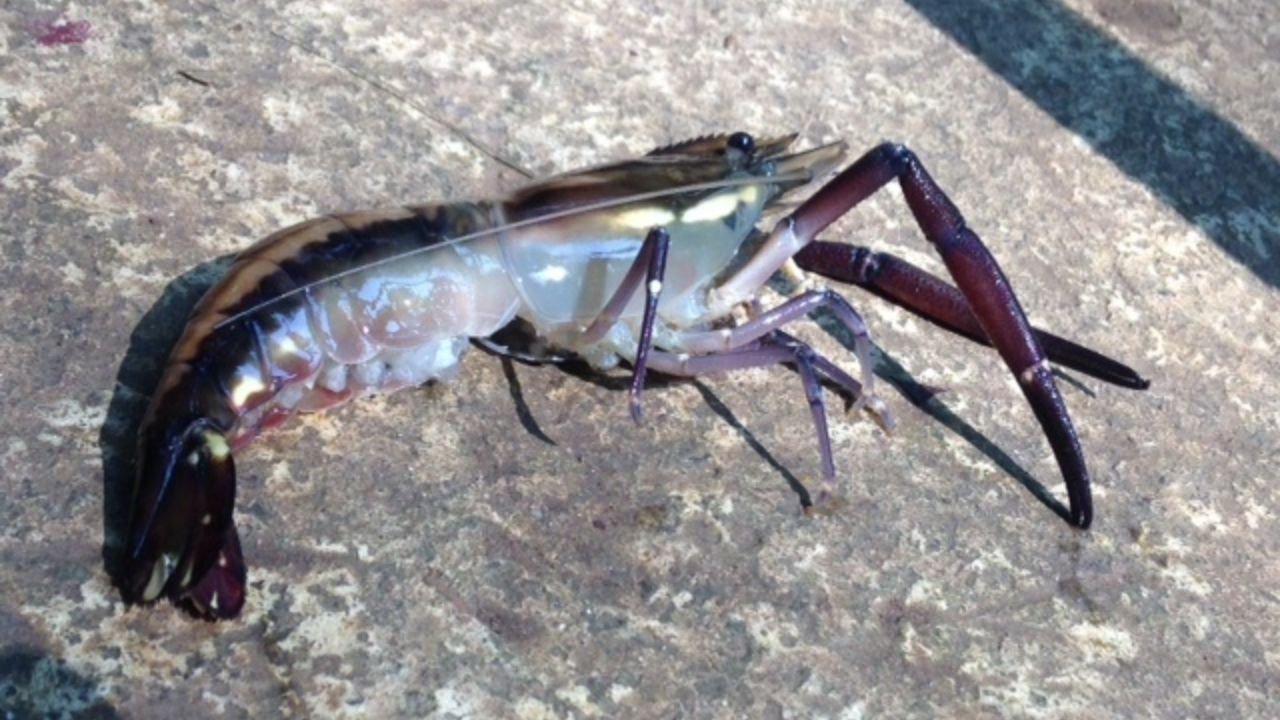Chagaras, commonly referred to as Palm Grasshoppers, are intriguing insects known for their vibrant colors and distinctive features. These grasshoppers primarily inhabit regions with abundant palm trees, where their natural camouflage allows them to blend seamlessly into their surroundings. A typical Chagara is characterized by its elongated body and uniquely patterned wings, which contribute to its striking appearance. These insects are not only fascinating to observe but also play a vital role in maintaining the balance of their ecosystems. In this article, we will explore various aspects of Chagaras, from their life cycle to their importance in both the environment and human cultures.
The Life Cycle of Chagaras
Understanding the life cycle of Chagaras provides insight into their ecological roles and behaviors. Like most grasshoppers, Chagaras undergo a simple life cycle that includes three main stages: egg, nymph, and adult.
Egg Stage
The life of a Chagara begins as an egg, which is generally laid in clusters on the stems or leaves of palm trees. These eggs are carefully placed to ensure they are well-protected from predators and environmental hazards. The incubation period varies depending on environmental conditions, such as temperature and humidity. During this phase, the eggs are vulnerable, relying heavily on their placement and natural camouflage for survival.
Nymph Stage
Once the eggs hatch, the nymphs emerge, resembling miniature adults but lacking fully developed wings. This stage is crucial for growth and development, as nymphs undergo several molts, shedding their exoskeletons to accommodate their increasing size. The nymph stage is marked by high energy and activity, as these young insects consume large quantities of foliage to fuel their rapid growth. Their ability to blend into their surroundings helps protect them from predators during this vulnerable stage.
Adult Stage
After completing their series of molts, Chagaras reach adulthood, characterized by fully developed wings and reproductive capabilities. Adults are typically more mobile than nymphs, utilizing their wings for short flights between feeding grounds. At this stage, Chagaras actively participate in the ecosystem by pollinating plants and serving as a food source for various predators. Their lifespan as adults can range from a few weeks to several months, depending on environmental conditions and predation pressures.
Importance in the Environment
Chagaras play a significant role in maintaining the health and diversity of their ecosystems. Their interactions with plants and other species contribute to ecological balance in several ways.
Pollination
While Chagaras primarily feed on plant matter, they inadvertently assist in pollination. As they move from one plant to another, pollen grains adhere to their bodies and are transferred, facilitating the reproductive processes of various flora. This role is particularly important in regions where other pollinators may be scarce or absent, highlighting the critical nature of Chagaras within their habitats.
Food Chain Contributions
Chagaras serve as a vital component of the food chain, providing nourishment for a wide range of predators, including birds, reptiles, and small mammals. Their presence helps sustain these predator populations, which in turn regulate the numbers of other prey species, preventing overpopulation and ensuring ecological balance.
Soil Health
The activities of Chagaras also contribute to soil health. By consuming decaying plant matter and excreting nutrient-rich waste, they help recycle essential nutrients back into the soil. This process supports plant growth and enhances soil fertility, ultimately benefiting the entire ecosystem.
Chagaras in Human Culture
Throughout history, Chagaras have held various cultural significances across different societies. In some regions, these grasshoppers are revered for their beauty and are featured in traditional art forms, such as paintings and textiles.
Traditional Beliefs
In certain cultures, Chagaras are believed to symbolize good fortune and prosperity. Folklore often depicts these insects as harbingers of favorable outcomes or omens of successful harvests. Such beliefs have led to the incorporation of Chagaras into rituals and ceremonies, where they are celebrated and revered.
Culinary Use
In some cultures, Chagaras are considered a delicacy and are consumed as part of traditional diets. Rich in protein and other essential nutrients, these insects are often roasted or fried and are appreciated for their unique flavor and texture. This practice highlights the diverse ways in which humans interact with and utilize Chagaras, emphasizing their cultural significance.
Artistic Inspiration
The striking appearance of Chagaras has inspired artists and artisans across the globe. Their vibrant colors and intricate patterns are often depicted in various art forms, serving as symbols of natural beauty and creativity. This artistic representation further underscores the value that Chagaras hold within human culture.
The Threats Faced by Chagaras
Despite their ecological and cultural importance, Chagaras face numerous threats that jeopardize their survival. These challenges are primarily driven by human activities and environmental changes.
Habitat Loss
One of the most significant threats to Chagaras is habitat loss, resulting from deforestation, urbanization, and agricultural expansion. The destruction of palm forests and other natural habitats reduces the available resources and living spaces for these insects, leading to population declines.
Climate Change
Climate change poses another critical threat to Chagaras, as alterations in temperature and precipitation patterns can disrupt their life cycles and habitats. Changes in weather conditions may affect the availability of food sources and suitable breeding sites, further exacerbating the challenges faced by these grasshoppers.
Pollution
Environmental pollution, particularly in the form of pesticides and chemical runoff, can have detrimental effects on Chagaras. Exposure to harmful substances can impact their health, reducing reproductive success and leading to population declines. Additionally, pollution can degrade the quality of their habitats, making them less hospitable for survival.
Conservation Efforts
In response to the threats faced by Chagaras, various conservation initiatives have been established to protect these insects and their habitats. These efforts involve collaboration between researchers, conservationists, and local communities.
Habitat Restoration
One key conservation strategy focuses on habitat restoration, aiming to rehabilitate damaged ecosystems and create suitable environments for Chagaras to thrive. This approach often involves reforestation projects and the establishment of protected areas where human activities are limited.
Research and Monitoring
Ongoing research and monitoring efforts are crucial for understanding the needs and behaviors of Chagaras, as well as assessing the effectiveness of conservation strategies. By studying their life cycles, population dynamics, and ecological interactions, scientists can develop targeted interventions that support their survival.
Community Engagement
Engaging local communities in conservation efforts is essential for long-term success. By raising awareness about the importance of Chagaras and promoting sustainable practices, conservationists can foster a sense of stewardship and encourage community involvement in protecting these insects and their habitats.
How to Support Chagaras
Individuals can also play a role in supporting Chagaras and contributing to their conservation. By adopting eco-friendly behaviors and practices, everyone can make a positive impact on these insects and their ecosystems.
Reduce Pesticide Use
One simple way to support Chagaras is by reducing the use of pesticides and other harmful chemicals in gardens and agricultural settings. Opting for organic and natural pest control methods can help protect these insects and their habitats.
Plant Native Flora
Planting native flora in gardens and landscapes can provide essential resources for Chagaras and other wildlife. Native plants offer valuable food sources and habitats, supporting the survival and reproduction of these grasshoppers.
Educate Others
Spreading awareness about the importance of Chagaras and their conservation can inspire others to take action. Sharing information and resources with friends, family, and communities can help foster a collective effort to protect these vital insects.
You May Also Like: Gary Payton Strain Genetics Overview
Conclusion
Chagaras, the Palm Grasshoppers, are fascinating insects that play a crucial role in maintaining ecological balance and enriching human cultures. Despite the challenges they face, ongoing conservation efforts and individual actions can help ensure their survival for future generations. By understanding the importance of Chagaras and taking steps to support their conservation, we can all contribute to a healthier and more sustainable world. Join us in celebrating and protecting these remarkable creatures, and consider exploring further resources to deepen your understanding and involvement.
FAQs
What are Chagaras?
Chagaras, also known as Palm Grasshoppers, are a species of grasshoppers known for their vibrant colors and unique patterns. They primarily inhabit regions with abundant palm trees and play an essential role in maintaining ecological balance.
Why are Chagaras important to the environment?
Chagaras contribute to pollination, serve as a food source for various predators, and help improve soil health through their feeding and excretion activities. These roles make them vital components of their ecosystems.
What threats do Chagaras face?
Chagaras face threats from habitat loss, climate change, and pollution. Human activities such as deforestation, urbanization, and the use of pesticides contribute to these challenges, impacting their survival.
How can I help support Chagaras conservation?
You can support Chagaras by reducing pesticide use, planting native flora, and spreading awareness about their importance and conservation. Engaging in these eco-friendly practices can positively impact their populations and habitats.
Are Chagaras used in any cultural practices?
Yes, in some cultures, Chagaras are revered for their beauty and are incorporated into traditional art forms and rituals. In certain regions, they are also consumed as part of traditional diets due to their nutritional value.











